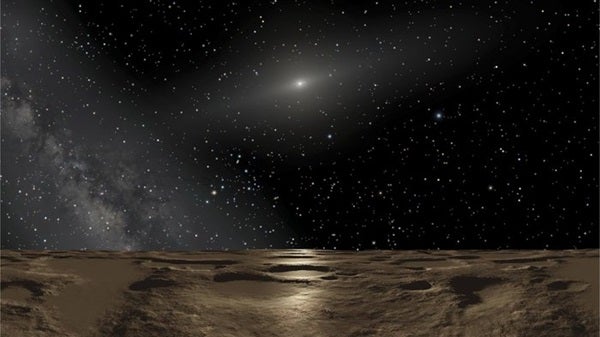Researchers at the University of Michigan found a new dwarf planet in our solar system, about 8.5 billion miles from the Sun.
The dwarf planet, given the designation 2014 UZ224, is around 330 miles across and would take 1,100 years to make one full orbit. The object is the third farthest known object in the solar system and is in an area of the Kuiper Belt detached from the gravitational influence of Neptune.
A team of students led by David Gerdes, an Arthur F. Thurnau Professor at Michigan, found 2014 UZ224. Gerdes had assisted in the development the Dark Energy Camera that makes a map of distant galaxies.
While undergraduates were visiting for the summer a few years ago, Gerdes asked them to try and find solar system objects using the galaxy map.
While stars and galaxies will usually remain in one place, a planet or asteroid will be in different places in the sky from night to night as it makes its orbit. This will usually create a connect-the-dot style photo that can be used to calculate the object’s orbit around the sun.
What makes the discovery of 2014 UZ224 interesting is that the images Gerdes had weren’t taken in consecutive nights.
“We often just have a single observation of the thing, on one night,” he said in an interview with NPR. “And then two weeks later one observation, and then five nights later another observation, and four months later another observation. So the connecting-the-dots problem is much more challenging.”










